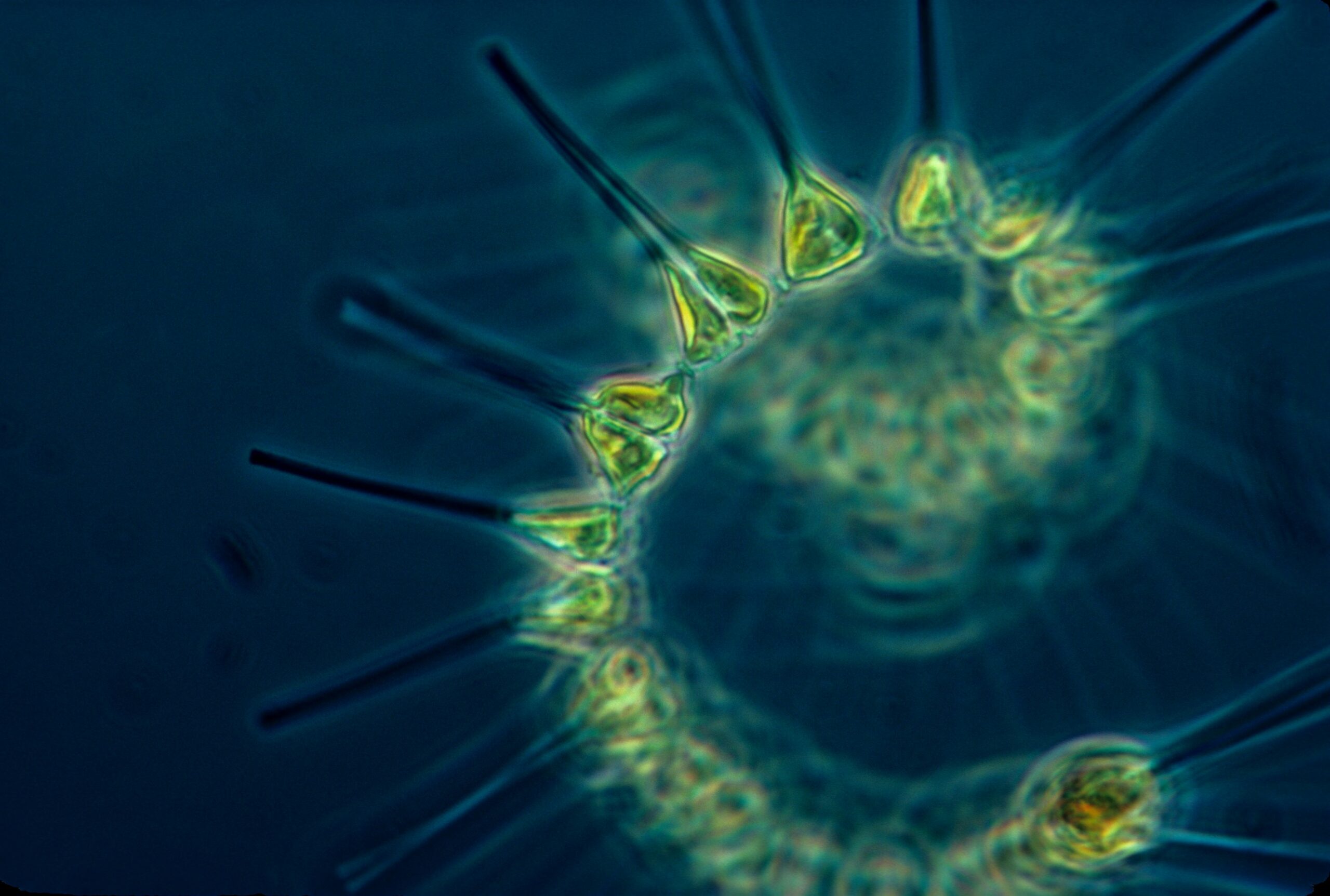
The method
Ocean Iron Fertilization is a climate repair technique that biomimics nature’s own processes.
The biological carbon pump
Nature has created the perfect carbon removal mechanism, known as the biological carbon pump. Tiny phytoplankton converts CO2 into biomass and oxygen. This is the beginning of the food chain.
Due to humans, the carbon pump has been disrupted.
We have a way to turn this around.
In nature, carbon is circulated by the food chain. Some of it re-enters the atmosphere by a process called upwelling. Some is sequestered in different layers of the ocean. Due to human intervention, this process has weakened and more and more CO2 re-enters the atmosphere. Iron, a natural trace element, is prerequisite for photosynthesis in plants. In a variety of oceanic locations it is the limiting nutrient for phytoplankton growth.”
Ocean Iron Fertilisation can boost this process. It empowers plankton to capture more carbon via photosynthesis, which in turn bring the carbon further down the food chain and eventually to the sediment.
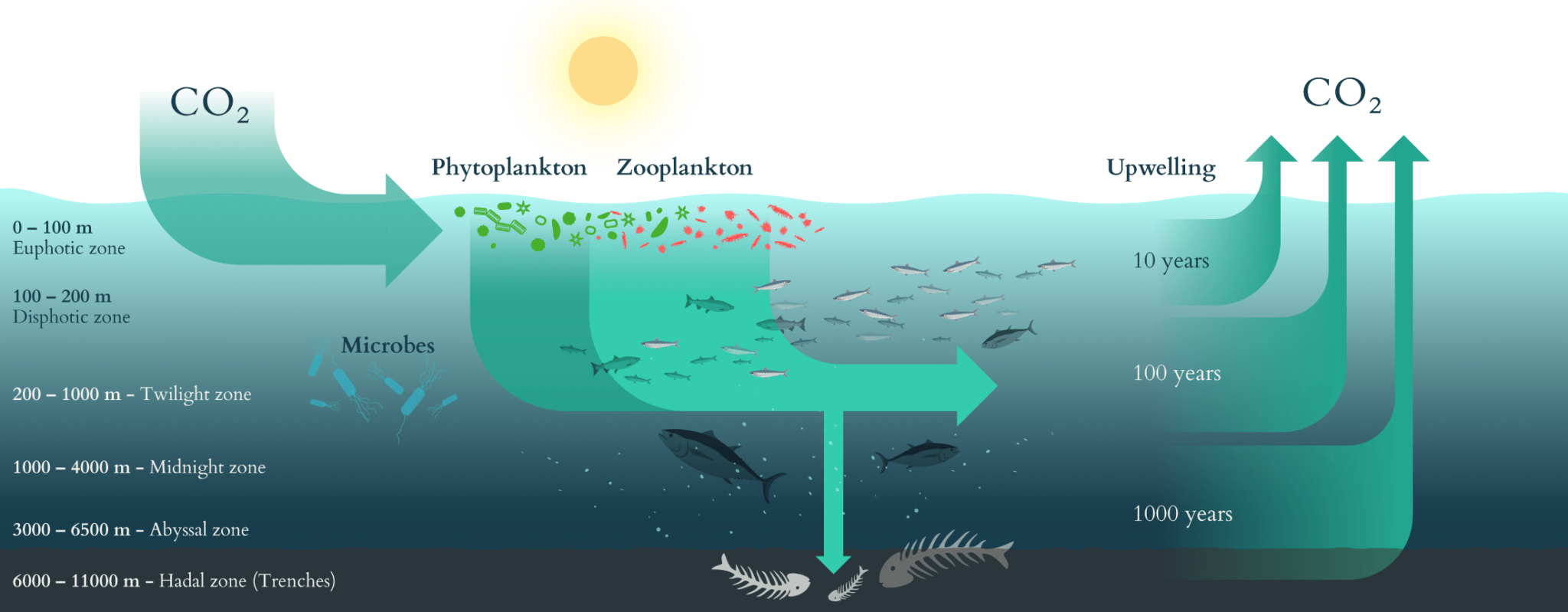
How OIF works
Day 1
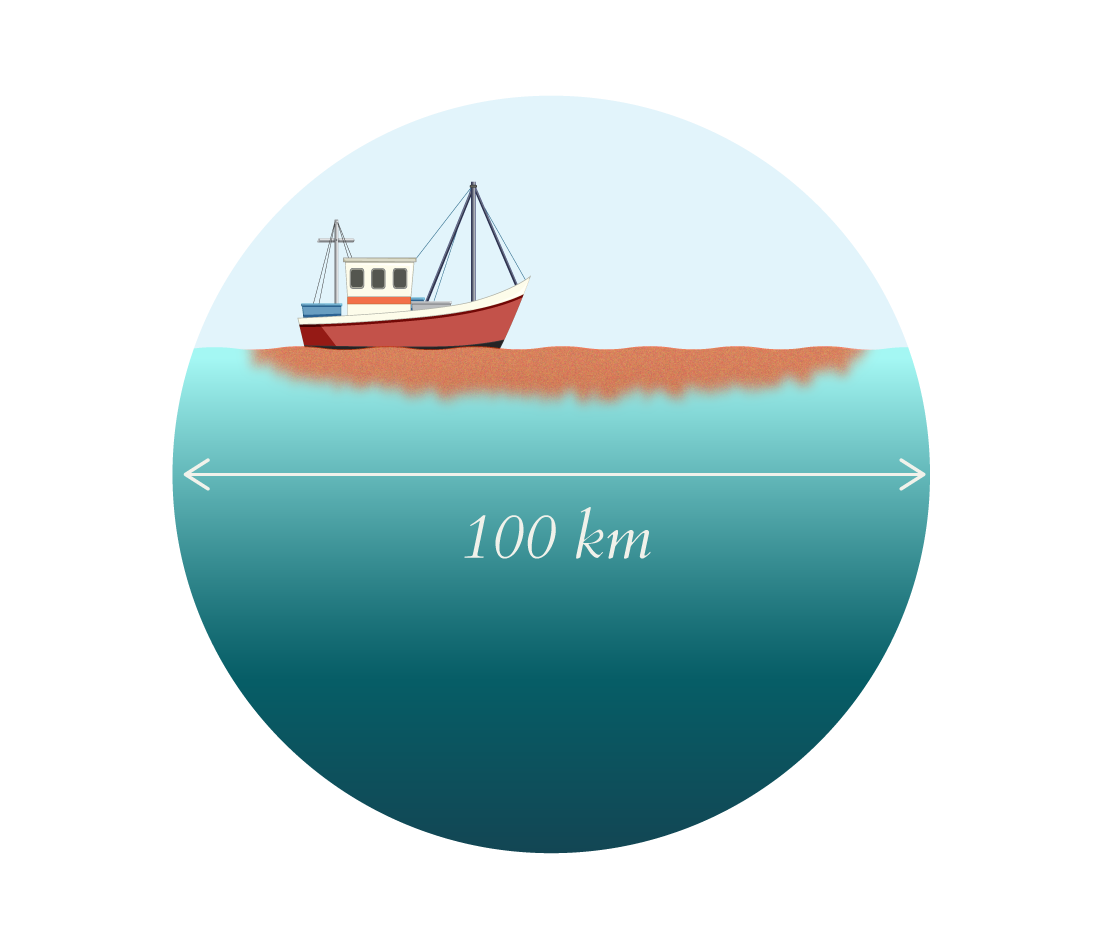
From locally operated vessels, the mineral dust is sprinkled over a chosen iron-depleted ocean area in parts-per-trillion concentrations.
Deployment happens only in the deep-seas, minimum 500km from coast.
Day 21
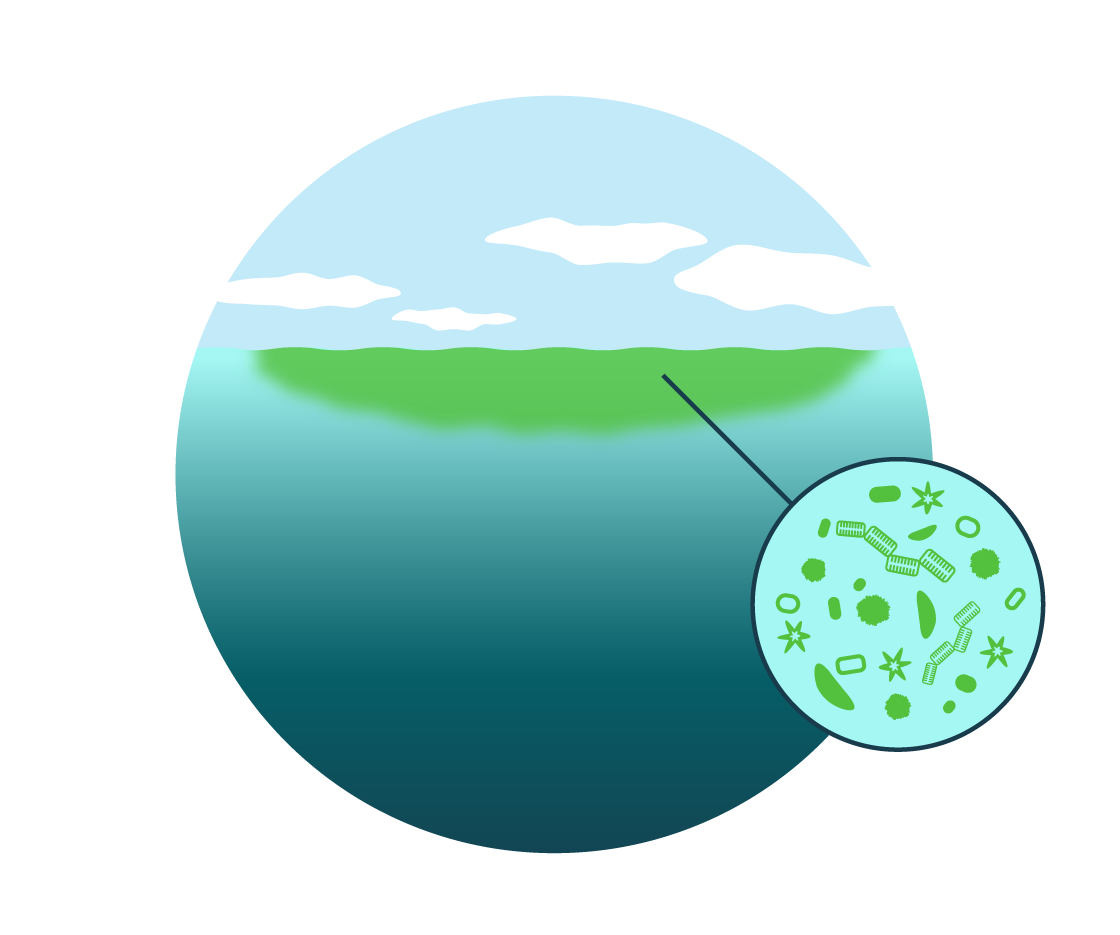
Natural iron-rich mineral
dust catalyzes photosynthesis and creates an algae bloom.
Carbon dioxide is removed from the atmosphere and fixed into biomass. Oxygen is evolved.
Day 35
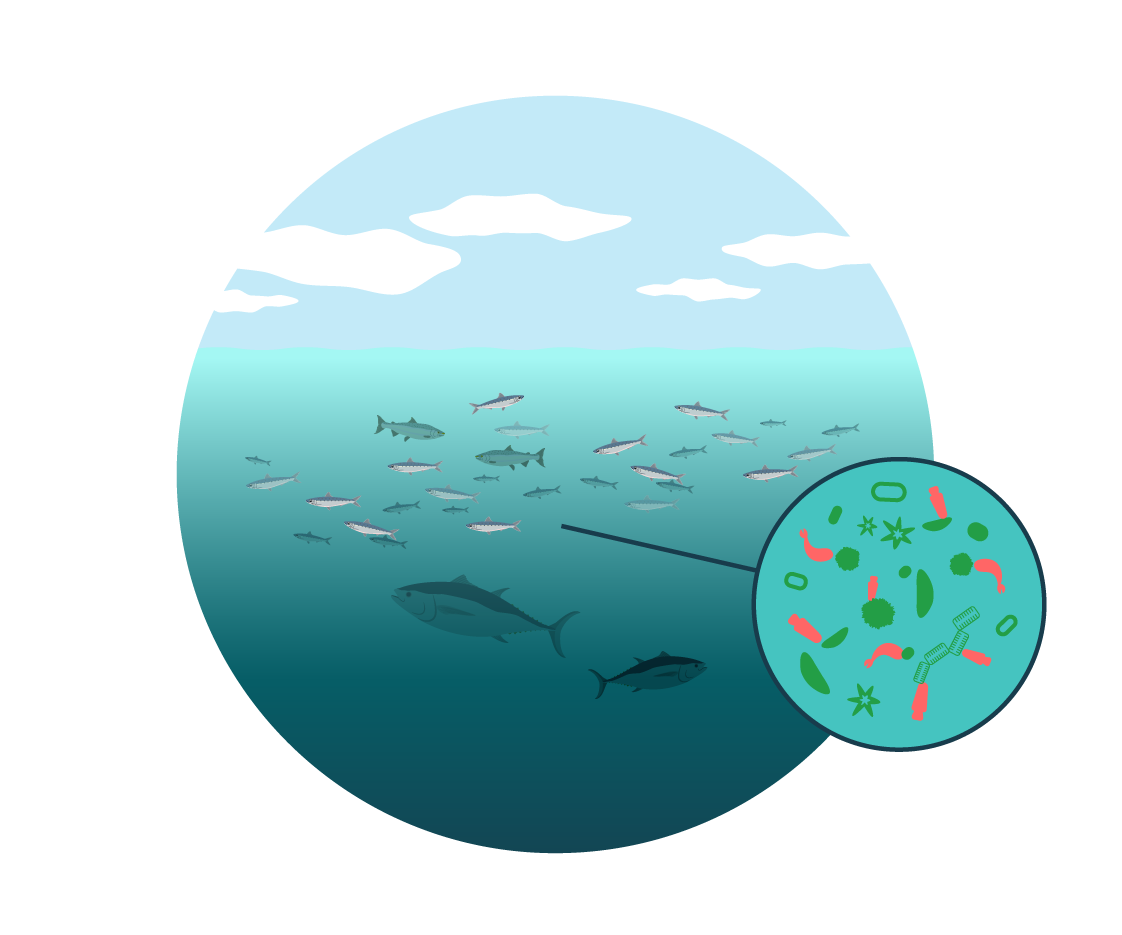
For carbon sequestration to happen, the algae must sink or be eaten by zoo-plankton or other animals, whose feces and carcasses fall to depth (called marine snow).
Day 365
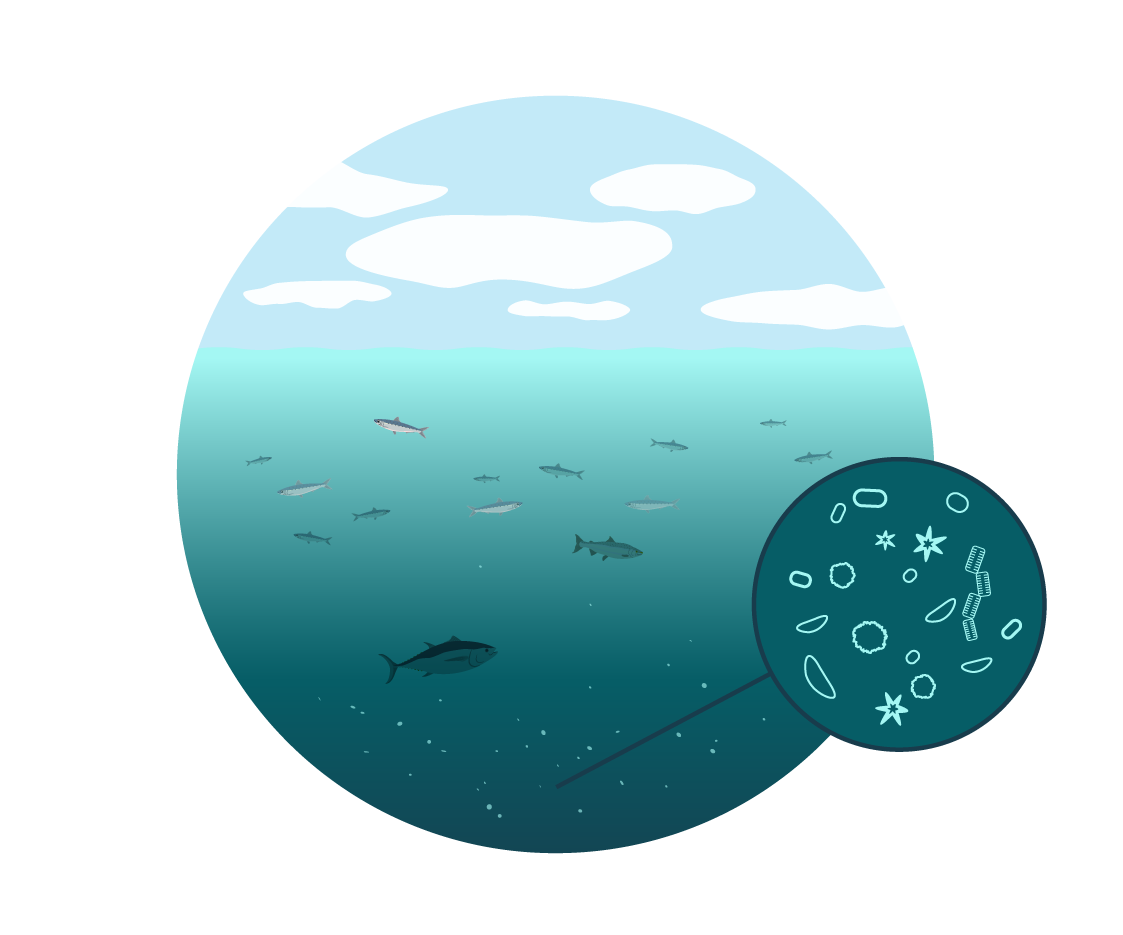
The carbon is partially respired back to CO2 but the rest remains sequestered in food webs, deep water nutrient cycles and sediment for centuries.
Frequently asked questions
OIF involves adding iron to ocean waters to stimulate phytoplankton growth, which absorbs CO₂ via photosynthesis. When phytoplankton die, some carbon sinks to the deep ocean, potentially sequestering it for millenia. Some carbon is bound to increased marine biota with lifespans up to a hundreds of years.
Iron is a limiting nutrient in many parts of the ocean. By adding iron, OIF triggers phytoplankton blooms that absorb CO₂. A portion of this biomass sinks, locking carbon away in deep waters or sediments.
Estimates vary, but large-scale OIF could remove hundreds of millions to billions of tons of CO₂ annually—making a significant contribution to climate mitigation. For comparison: EU (27 countries) CO2 emissions 2023 was 2,4 billion tons.
Yes, iron inputs from sand dust storms, wildfire ash or volcanic ash naturally fertilize the ocean. Ocean iron fertilization mimics these processes but on a controlled scale. (Langmann et al. 2010)
OIF is more scalable and significantly more cost-effective than other direct air capture technologies but is less predictable and cannot be similarly controlled compared to technologies in closed-systems.
Depending on ocean currents and depth, sequestered carbon can remain for decades to millenia, part of the carbon returns to the atmosphere over time.
For carbon to be considered “permanent,” it would need to stay sequestered for over 1,000 years. While some percentage of the CO₂ is estimated to be locked away this long, much of it will re-enter the atmosphere over centuries through natural upwelling and respiration processes.
1-20% of the CO₂ captured by phytoplankton ultimately is estimated to reach deep waters or sediments. The rest cycles back into surface waters, limiting sequestration efficiency.
It could contribute meaningfully but not solve climate change alone. OIF should be considered as part of a broader portfolio of carbon removal strategies.
We emphasize that OIF is not giving an excuse to continue polluting, but is rather a means to remove legacy emissions and provide support for biodiversity. We are also aware of the fact that even if we stopped burning fossil-fuels today, there is over 2 teratons of excess CO2 in the atmosphere. To put this into context, 2 teratons is about 50 times the annual global emissions. Hence, we need to find ways to remove that excess CO2.
If done in the wrong location (i.e too close to coasts) or during the wrong time (i.e if water temperature is over 20 degrees) risks might include, temporary oxygen depletion, food web and biodiversity disruptions, increased production of climate-relevant gases like methane and nitrous oxide, or possible unintended harmful algal blooms (HABs). Oceanry’s key goal is to develop global standardization and regulation to make sure iron fertilization is done in a safe and controlled way. Oceanry favors to use inert, inorganic geological material, which is whitelisted under the London Protocol.
Careful choice of experiment deployment area will help reduce the risk of harmful algal blooms:
- Avoiding high nutrient areas, with elevated surface water temperature will reduce harmful algae bloom (HAB) risk.
- Deployments at high seas, in remote locations, away from the influence of coastal runoff nutrients are preferred.
- Deployment in cooler waters, further away from equatorial areas will reduce risk of HABs.
- Deployments in different times of the year, in closeby regions will help balance out the impacts of a single experiment.
- Natural inert, inorganic geological material are preferred for the source of iron.
Hydrocarbon production shall be researched to understand cloud production mechanisms (through isoprene and other cloud condensation nuclei) and potential methane and other greenhouse gas production. Multidisciplinary research shall be carried out to understand short- and mid-term impacts, research starting before deployment and ending 5 years after the deployment. It is expected that no visible signs will be left one year after the deployment.
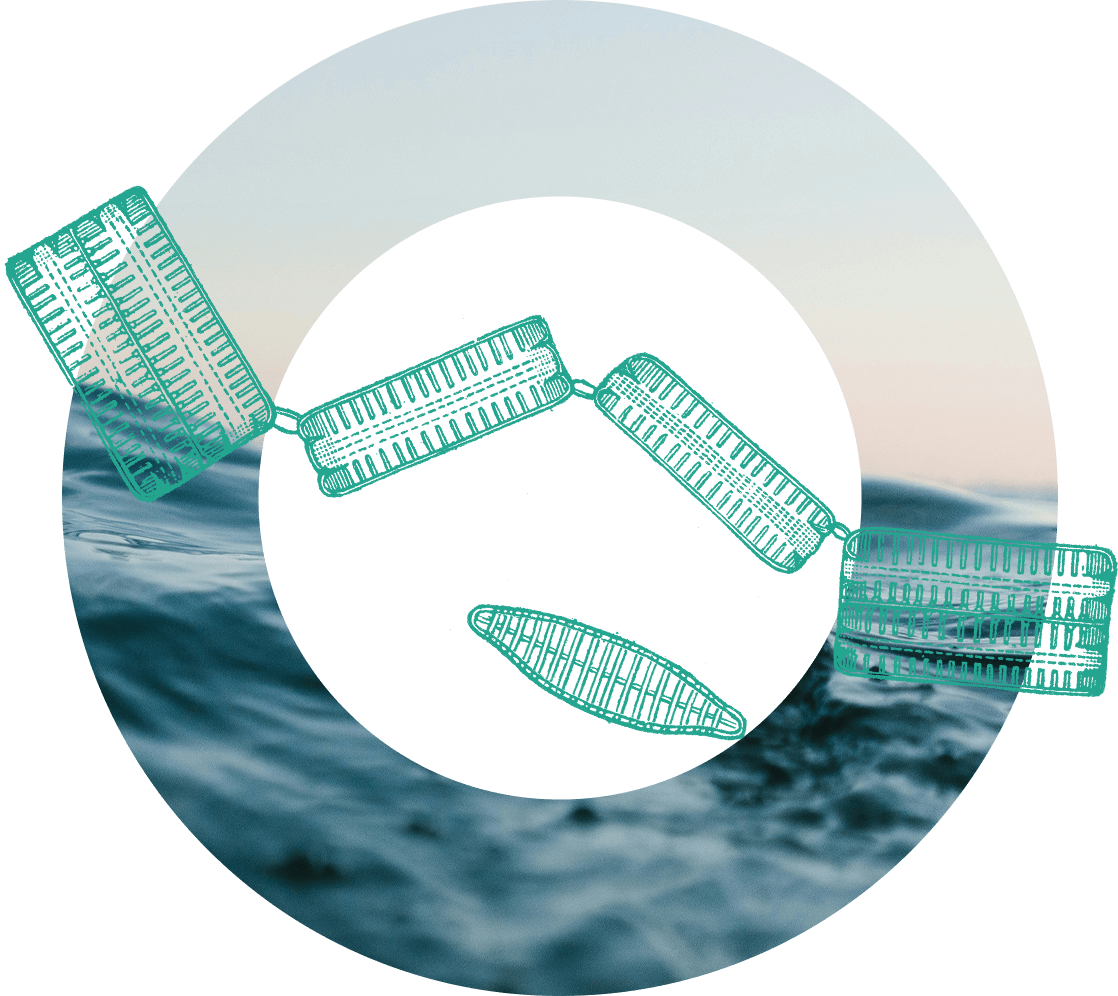
Why now?
We need to aim for a nature positive society. It is evident that net zero as a target is no longer sufficient and emissions reductions in the industry and society are too slow.
OIF gives us time to reduce emissions and it supports marine rewilding and nature restoration also on land. We have no time to lose in scaling up these solutions to ensure we minimize species extinction and enable a thriving nature-loving society.
MULTIDISCIPLINARY RESEARCH WILL PROVIDE
THOROUGH UNDERSTANDING OF IRON FERTILIZATION
Multidisciplinary research is needed to demonstrate to decisionmakers, regulators, politicians, investors and media that OIF can be deployed safely and with least harm in a manner that it biologically sequesters carbon, regenerates biomass and restores biodiversity in the ocean.
Research must be carried out independently by universities or research institutes to provide credible, non-biased results. The funding for the research must be free from directly profit-oriented control mechanisms, ideally from foundations, donations, grants, or CSR donations from corporations with an interest to support solutions for climate and biodiversity crisis. Research will be carried out before, during and after the deployment, and will involve both remote and in-situ sensing.
Research disciplines and impact evaluations
- Carbon sequestration
- CO2 concentration net change in air and water
- Biomass net change in different ocean layers
- Deoxygenation
- Scale
- Efficacy Fe:CO2
- Permanence
Biodiversity restoration
- Number and concentration of different species
- Impact on food chains
- Harmful algal blooms
- Permanence
Aerosols
- Concentration net change
- SO2, DMS, O2, nitrous aerosols, hydrocarbons, particulate matter in the area
Ocean chemistry, physics and dynamics
- pH
- Temperature
- Ocean currents and circulations
- Nutrients
Social and livelihood impacts, co-benefits, costs
Regulations and standards are needed to provide iron fertilization a framework within which entities can operate, maximizing positive outcomes and minimizing the risks
The current legal framework for marine CDR (mCDR) is highly fragmented.
Currently, the UN and IMO regulate the high seas under the United Nations Convention of the Law of the Seas (UNCLOS), with the ITLOS (International Tribunal for the Law of the Seas) being the regulating body and the London Protocol and London Convention.
However, ITLOS only proposes “Advisory Opinions” as the high seas are not formally regulated by hard law.
At the same time, ITLOS has stated in 21.04.2024 Advisory opinion on climate change, that carbon dioxide is a pollution that UN member states shall take measures minimize carbon dioxide pollution.
What is needed?
The future regulations and standards need to define and allow deployment of OIF on the following principles:
- In chosen ocean areas or conditions (e.g. HNLC1)
- In ocean areas below 25°C surface temperatures (1-5 m depth)
- In high seas, with minimum 200 nautical miles from the continental coasts
- In high seas, with minimum 50 nautical miles from protected areas
- By any entity, registered in any country, irrespective of LP/LC2 ratification, irrespective of ship registration country, as long as deployment project is pre-registered in a public domain
- Spreading methods
- Required impact measurements, e.g. satellite remote sensing to measure carbon dioxide removal
1High nutrient, low chlorophyll, 2London Protocol, London Convention
Stakeholder communication plays a key role
Increasing awareness and open communication regarding the impacts of ocean iron fertilization is needed to gain social acceptance. The main communication objectives are:
- Actively and diversely communicate existing research findings to key stakeholders.
- Engage in dialogues with regulators.
- Conduct a GAP analysis informed by input from various stakeholders.
Phase 1 (in-progress)
Preliminary mapping and initiating communication
The goals of the first phase are to create a clear understanding of global actors and initiatives related to iron fertilization, and to concretely establish communication channels to reach the relevant stakeholders:
- Stakeholders: universities, NGOs, policy-makers, EU Commission
- Establishment of a scientific working and advisory group
- Mapping of key legal frameworks to understand the regulatory field
- Start of writing policy recommendations
Phase 2:
Advocacy work on the EU level
The goal of the second phase is to initiate the implementation work. To optimize resource allocation and leverage the network, we will start this effort in Finland and at the EU level:
- Advocacy efforts (one-on-one meetings with policymakers and NGOs)
- Participation in events, conferences, or public speaking engagements at EU level
- Meetings with industry actors to raise general awareness
- Producing research-based content (including writing accessible articles, open letters, and social media content)
Phase 3:
Implementation at global level
Iron fertilization has been particularly advanced in the United States, making it essential to establish communication and engagement there. The timing is favorable, as multiple initiatives are currently advancing marine restoration and conservation efforts. Activities include:
- Events and global conferences (eg OceanVisions Summit, COP, key biodiversity summits)
- Media engagement
- Meeting with global iron fertilization players